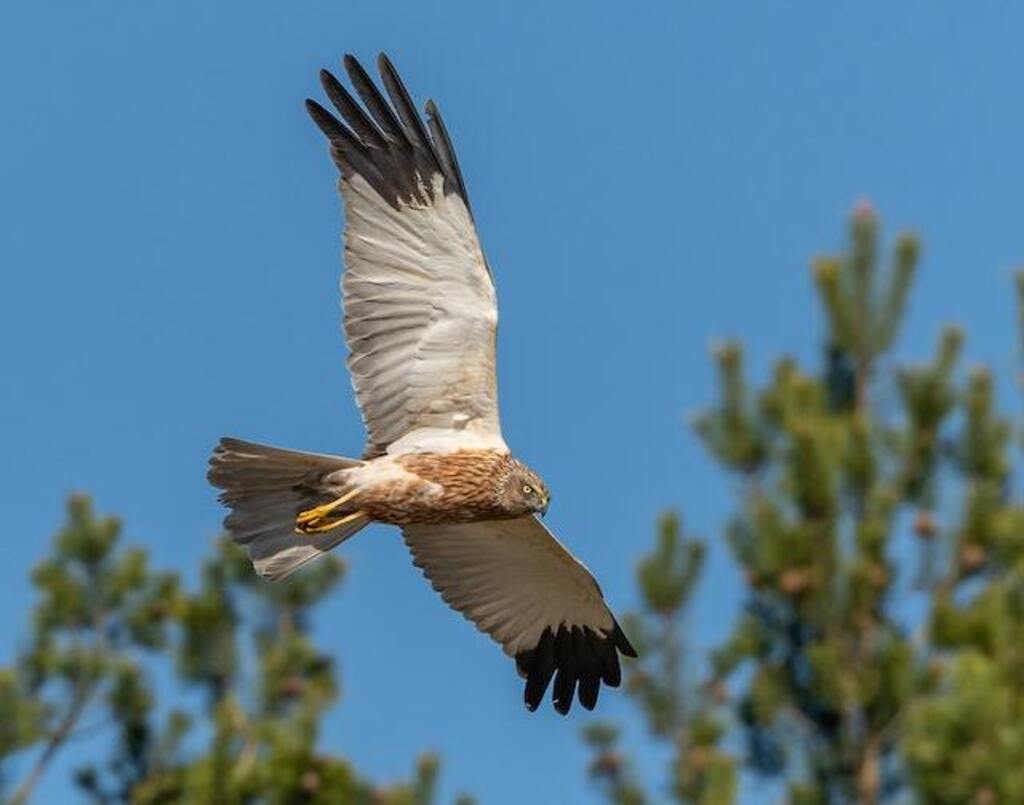Do hawks circle? It’s a question that has puzzled bird enthusiasts and nature lovers for ages. Hawks, those majestic birds of prey with their soaring flights and sharp talons, have captivated our attention. But what’s with their circling behavior? Let’s take a closer look.
Hawks possess remarkable eyesight, able to spot prey from miles away. Their exceptional vision allows them to track movements with precision, and circling plays a role in leveraging this advantage.
It provides them with a higher vantage point to survey the area, identify potential prey, mark territory, or explore their surroundings.
Get ready to unravel the mystery behind these fascinating aerial maneuvers and discover why hawks take to the skies in circles!
Table of Contents
Key Takeaways
- Hawks engage in circling behavior to survey the area and identify prey or threats.
- Flight behavior is crucial for territory establishment and defense, including circling, high-flying, and diving attacks.
- Hawks use flight to migrate long distances, soaring on thermal currents and navigating with their keen eyesight.
- Understanding flight behavior and migration processes is essential for conservation efforts and understanding the natural world.

Do Hawks Circle?
Yes, hawks do circle. Hawks exhibit circling behavior as a way to utilize their exceptional eyesight. By soaring in circles, they gain a higher vantage point to spot potential prey, mark territory, and explore their environment. Circling is a fascinating aerial maneuver employed by these majestic birds of prey.
Introduction to Hawks and Their Behavior
In the study of avian behavior, it is observed that hawks frequently engage in circling behavior during their flight patterns.
Hawks are known for their keen eyesight and hunting prowess, as they are able to spot prey from great distances. They have a varied diet, ranging from small rodents to larger game birds.
Hawks also exhibit interesting nesting habits, building their nests in high, secluded areas such as trees or cliffs.
The circling behavior of hawks is believed to be related to their hunting technique, as they are able to gain altitude and spot prey from a greater distance.
This behavior is also thought to be related to their navigation, as they are able to orient themselves and locate their nests from high above.
The importance of sight in hawks cannot be overstated, as it is a crucial aspect of their survival and success in the wild.
The Importance of Sight
The ability to perceive visual information accurately and quickly is crucial for many animals, including birds of prey. Hawks, like many other raptors, rely heavily on their vision to survive in the wild.
Their exceptional eyesight allows them to spot prey from great distances, even while flying at high speeds.
This is due to their unique eyes, which have a high concentration of cone cells that allow for improved color vision and detail perception.
In addition, hawks have a fovea, a small depression in the retina that provides a high concentration of photoreceptor cells, allowing them to focus on small objects with great precision.
These adaptations have made hawks some of the most skilled hunters in the animal kingdom, with the ability to spot and track prey with remarkable accuracy.
The importance of sight in hawks cannot be overstated, as it is directly linked to their performance and perception in the wild.
With their exceptional visual abilities, hawks are able to employ a variety of hunting techniques, which will be discussed in the subsequent section.
Hunting Techniques
One effective way for birds of prey to catch their prey is by utilizing various hunting techniques. Hawks, for example, have developed several hunting strategies that allow them to successfully capture their prey. These techniques include aerial hunting, ambush, and stalking.
Aerial hunting involves circling above their prey and then diving down at high speeds to catch it.
Ambush, on the other hand, involves waiting for their prey to come to them, often by hiding in dense vegetation or behind other objects.
Stalking involves silently and slowly moving towards their prey, often using cover to remain hidden until the perfect moment to strike.
Prey selection is also crucial for hawks, as they typically target smaller animals such as rodents and small birds.
By employing these hunting techniques and being selective about their prey, hawks are able to increase their chances of a successful hunt.
Moving on to the next subtopic, marking territory…
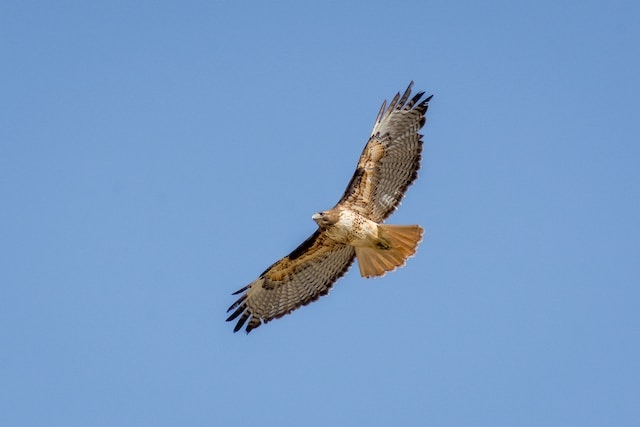
Marking Territory
Territorial behavior is a fundamental aspect of many animal species, including birds of prey. The role of flight in marking and defending territories is a crucial component of their behavior.
Through flight, hawks and other raptors are able to communicate with one another and signal their presence to potential rivals.
This subtopic will explore the intricate ways in which birds of prey use flight to mark and protect their territories.
The Role of Flight in Territorial Behavior
Flight behavior plays a crucial role in the establishment and defense of an animal’s territory, including hawks.
The role of wing morphology in the flight behavior of hawks is essential as it determines the energy required for the bird to fly and how it maneuvers in the air.
Hawks are sensitive to environmental changes, including climate change, which can affect their behavior in the air.
Hawks also use flight to search for prey and maintain their territory by circling above it to deter intruders, flying high to survey the area, and diving down to attack potential threats.
Understanding the intricacies of flight behavior in hawks can provide insights into how they defend their territory and the impact of climate change on their habitat.
Communication through flight is another crucial aspect of territorial behavior in animals, and understanding this can help us comprehend the complex interactions between animals in their natural habitats.
Communication Through Flight
Communication is a fundamental aspect of animal behavior, and in the case of hawks, it can occur through various forms of flight, including vocalizations and body language.
Flight communication refers to the use of aerial movements and sounds to convey information between individuals.
Hawks use flight communication to establish and maintain social bonds, express aggression, and signal their intentions during hunting.
Behavioral cues, such as aerial displays and postures, are also used to convey information about an individual’s social status, reproductive condition, and territorial ownership.
For example, successful hunters may display their prey to attract a mate or assert their dominance over rivals.
Vocalizations, such as screeches and whistles, are also used to communicate with other hawks.
In addition to social communication, hawks also use flight to migrate long distances. By soaring on thermal currents and using their keen eyesight, hawks are able to navigate across vast distances.
This ability to communicate and migrate through flight highlights the importance of aerial behavior in the lives of these fascinating birds.
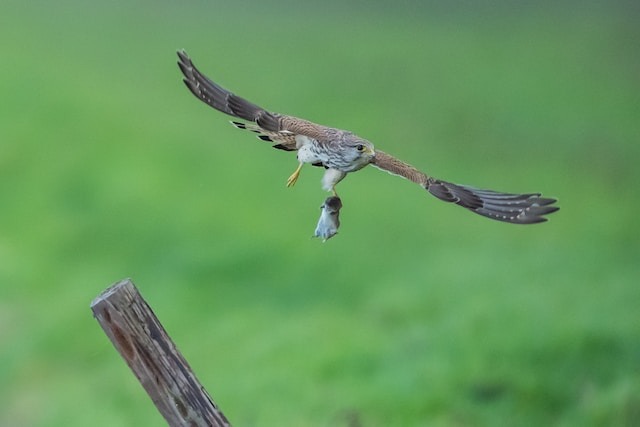
Migration Patterns
Migration is a complex phenomenon that is widely observed in the animal kingdom.
One of the key factors that contribute to successful migration is the ability of animals to navigate and orient themselves to their destination.
In this context, circles play an important role in guiding animals along their migration path, as they provide a visual cue that helps animals maintain their direction and stay on course.
The Role of Circles in Migration
The phenomenon of circular flight patterns in birds such as hawks has long intrigued researchers studying the role of circles in migration.
The role of wind has been identified as a crucial factor in the formation of circular flight patterns, as birds use updrafts to gain altitude and conserve energy during long migratory journeys.
These circular patterns also serve as a means of orientation, allowing birds to survey the surrounding landscape and navigate towards their destination.
While there is still much to be understood about the role of circles in migration, research continues to shed light on the fascinating behaviors of birds during their journeys across vast distances.
With this understanding, we can gain a greater appreciation for the incredible abilities of these creatures and the complex systems that guide their movements.
Navigation and orientation are crucial factors that enable birds to successfully complete their long migratory journeys.
Birds use a combination of navigation techniques and orientation cues to find their way.
Navigation techniques include celestial navigation, which relies on the positions of the stars and sun, and magnetic navigation, which uses the Earth’s magnetic field.
Orientation cues include visual landmarks, such as coastlines and mountain ranges, and olfactory cues, such as the scent of plants and water.
Birds also use their internal biological clocks to keep track of time and their location relative to the changing seasons.
The ability to navigate and orient themselves allows birds to find food and water, avoid predators, and reach their breeding grounds.
Understanding these processes is essential for conservation efforts and can help us better understand the natural world.
As birds rely heavily on weather patterns during migration, the next section will explore how extreme weather events can impact these journeys.
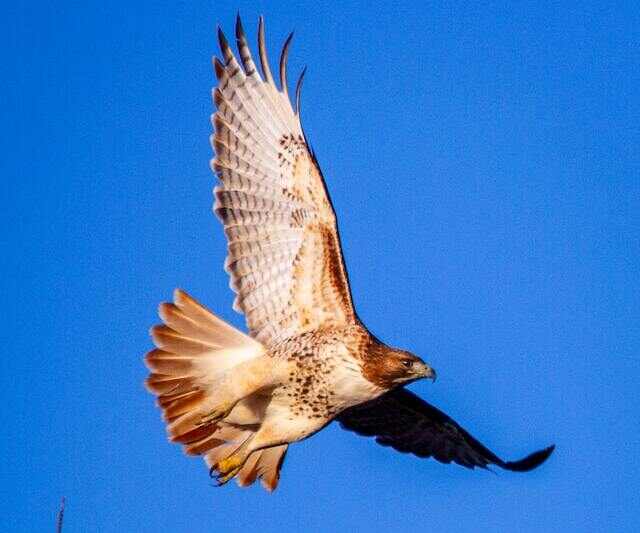
Weather Patterns
The subtopic of weather patterns is an important aspect to consider when studying migration patterns in birds.
Hawks, for example, use circles to soar on thermals, which are upward currents of warm air that they use to gain altitude and travel long distances.
Adapting to changing weather conditions is also crucial for birds during migration, as they must navigate through different climates and weather patterns.
Understanding these weather patterns can provide insight into how birds adapt and survive during their long journeys.
Using Circles to Soar on Thermals
Utilizing circular flight patterns to ride on rising air currents, hawks are able to effortlessly soar for extended periods of time.
This technique, known as dynamic soaring, allows them to conserve energy while searching for prey, traveling long distances, or simply enjoying the sensation of flight.
Soaring techniques involve skillfully navigating through thermals, which are pockets of hot air that rise from the ground due to uneven heating.
Hawks circle around these thermals, gaining altitude with each turn, until they reach their desired altitude.
This mesmerizing behavior evokes a sense of awe and wonder in observers, as they witness the beauty and grace of these magnificent birds in flight.
The desire for freedom is often subconscious, yet it is a driving force for many individuals.
Watching hawks soar effortlessly through the sky can tap into this desire, inspiring a sense of liberation and possibility.
As weather patterns can be unpredictable, hawks must adapt to changing conditions in order to maximize their flight time.
Adapting to Changing Weather Conditions
Adapting to changing weather conditions is crucial for hawks to optimize their flight time and continue their mesmerizing display of grace and freedom in the sky.
As climate change continues to affect weather patterns, hawks must adapt in order to survive.
Hawks are known for their exceptional eyesight and ability to spot prey from great heights, but they also rely on their ability to catch thermals and soar effortlessly through the sky.
When weather conditions are unfavorable, such as high winds or low pressure systems, hawks must adjust their flight patterns to conserve energy and maintain their altitude.
This may involve flying in circles at a lower altitude or finding sheltered areas to wait out the weather.
Hawks have also been known to alter their migration patterns in response to changing weather conditions.
These survival strategies are essential for the continued existence of hawks in the face of climate change.
As we explore further into the social behavior of hawks, we will gain a deeper understanding of how they interact with their environment and each other.
Social Behavior
Social behavior is an important aspect of hawk species, with courtship displays and group hunting techniques being notable areas of discussion.
Courtship displays involve various behaviors, such as soaring, diving, and vocalizations, which are used to attract mates.
Group hunting techniques are used by some hawk species where they work together, either in pairs or larger groups, to capture prey.
Understanding these social behaviors can provide valuable insights into the complex lives of these birds of prey.
Courtship Displays
One cannot deny the fascinating courtship displays of hawks, involving intricate aerial acrobatics and vocalizations.
Hawk courtship usually begins with males performing aerial displays to attract females, including soaring, diving, and chasing.
The males also deliver food to the females to demonstrate their ability to provide for a family.
Once the female accepts the male, they perform a ritual dance in the air, where they fly together in circles and perform synchronized movements.
The male then drops a stick or prey item, which the female catches mid-air. This act symbolizes the transfer of food and marks the beginning of the mating process.
These courtship displays are not just for show but are critical for pair bonding and successful breeding. The intricate movements and vocalizations help the birds communicate and strengthen their relationship.
The courtship displays of hawks are a beautiful example of the complex mating rituals of birds.
As fascinating as the courtship displays are, hawks also exhibit incredible group hunting techniques, which we will explore in the next section.
Group Hunting Techniques
Group hunting techniques are a critical aspect of the hunting success of hawks. Hawks’ group behavior is highly evolved, and they have developed a range of hunting tactics that enable them to take down prey much larger than themselves.
One of the most common tactics is the formation of a circle, where one hawk will take the lead and the others will follow in a coordinated manner.
The lead hawk will then dive down to catch the prey, while the others remain in position to prevent the prey from escaping.
Another tactic used by hawks is cooperative hunting, where several hawks work together to flush out prey from hiding places.
Hawks’ group hunting techniques demonstrate the importance of cooperation and communication in achieving success in the wild.
Understanding the complexities of hawks’ hunting behaviors can give us a greater appreciation for the intelligence and adaptability of these birds.
Moving forward, it is important to consider how human interaction with hawk populations may impact their group hunting behaviors.
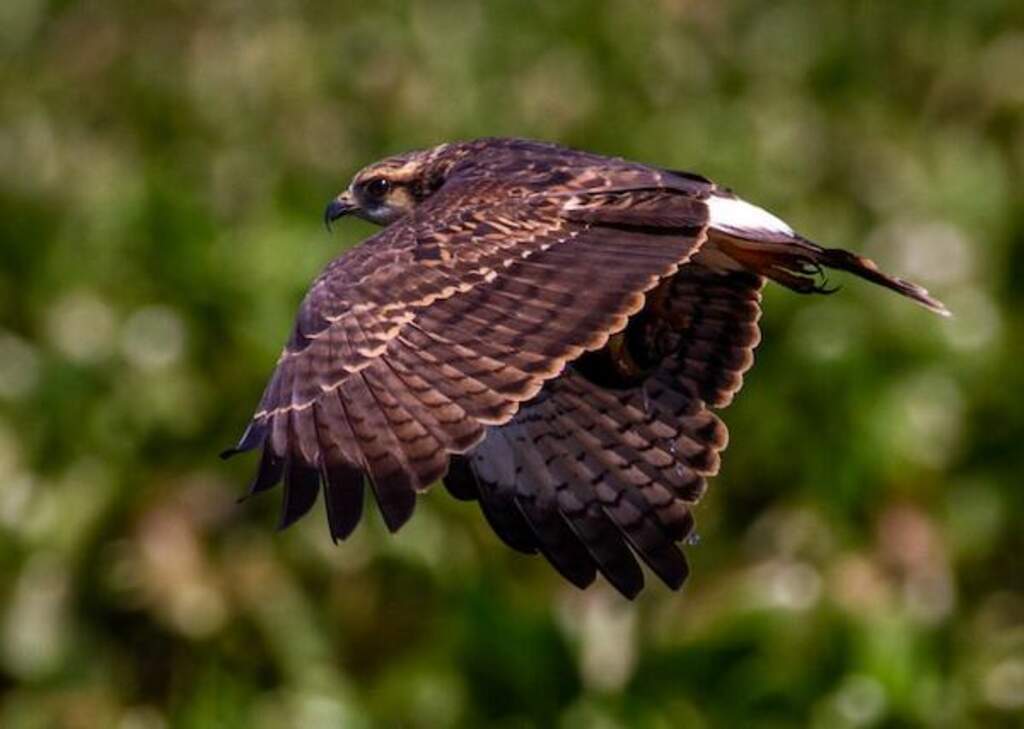
Human Interaction
Interactions between humans and hawks can be complex, as humans may view hawks as both a symbol of power and a potential threat to their own safety.
Human interaction with hawks has been observed to have an impact on the behavioral patterns of these birds of prey.
Some of the ways in which human interaction with hawks can occur include bird watching, falconry, and even hunting.
Human activities such as urbanization and deforestation have also led to a reduction in the natural habitat of hawks, which has increased the likelihood of human-hawk interactions.
In some cases, hawks have been known to attack humans, especially when they feel threatened or when their young are in danger.
However, it is important to appreciate the beauty and complexity of hawks in flight, as they are an important part of the ecosystem.
By understanding their behavior and respecting their habitat, humans and hawks can coexist in a mutually beneficial way.
Conclusion
Appreciating the graceful and intricate flight patterns of hawks can provide a unique and awe-inspiring experience for observers. The beauty and complexity of their flight is a result of their natural instincts and the aerodynamics of their flight.
Hawks are able to soar effortlessly through the air, using their keen eyesight to hunt prey below.
Their wings are perfectly adapted for flight, with strong muscles and flexible feathers that allow for precise control and maneuverability.
Observing hawks in flight can also provide insight into the natural world and the delicate balance of ecosystems.
It is a reminder of the importance of preserving and protecting these magnificent creatures and their habitats.
Overall, taking the time to appreciate the beauty and complexity of hawks in flight can be a humbling and inspiring experience.
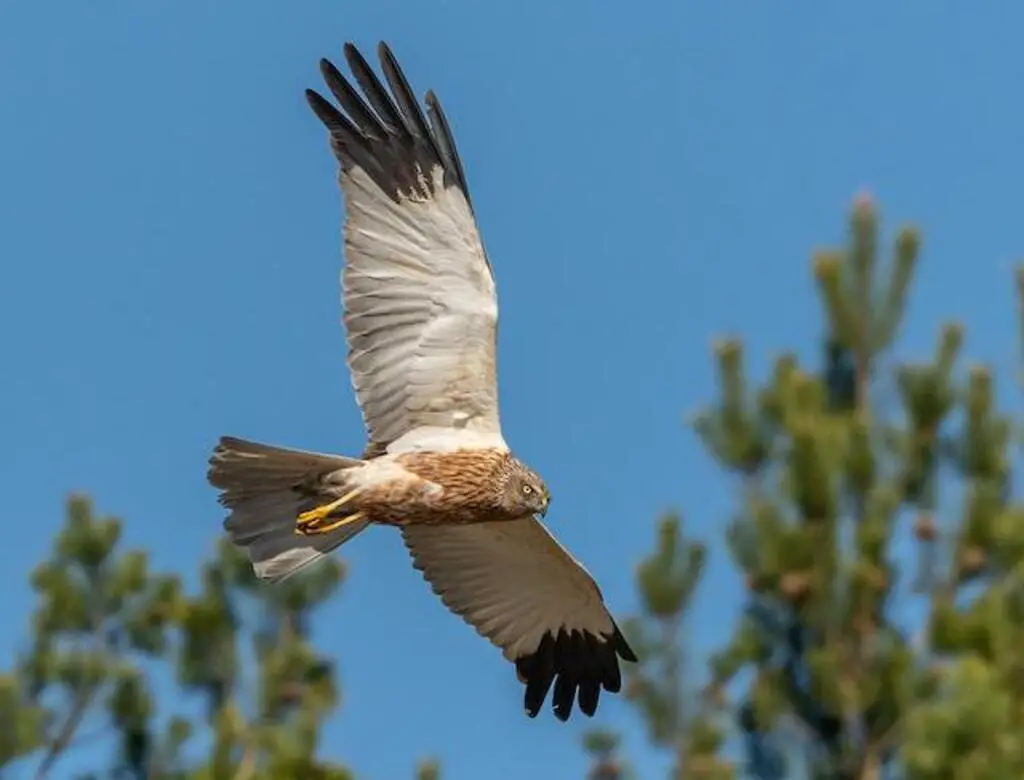
Frequently Asked Questions
What are the different species of hawks?
Red-tailed hawks and Cooper’s hawks are two distinct species of hawks. One can identify hawks by their calls, which differ across species. An objective and scientific approach is necessary for precise identification.
How long do hawks typically live in the wild?
The average lifespan of hawks in the wild varies depending on the species and habitat distribution. Generally, larger species have longer lifespans, with some living up to 25 years. Hawks exhibit impressive aerial skills, including circling, which aids in hunting and territorial defense.
Do hawks have any natural predators?
Hawks, as apex predators, have few natural predators in the wild. However, their eggs and young are vulnerable to predation by mammals and snakes. Hawks use hunting strategies such as soaring and stalking to catch prey.
Can hawks be trained for falconry or other types of hunting?
Hawks in captivity can be trained for falconry using various techniques such as positive reinforcement and operant conditioning. Training should be done by an experienced handler to avoid injuring the bird and ensure its welfare.
How do hawks communicate with each other?
Hawks communicate vocally and through body language, using specific calls for different situations. They also employ hunting techniques such as swooping and striking to catch prey. Understanding their communication is crucial for successful falconry and conservation efforts.

